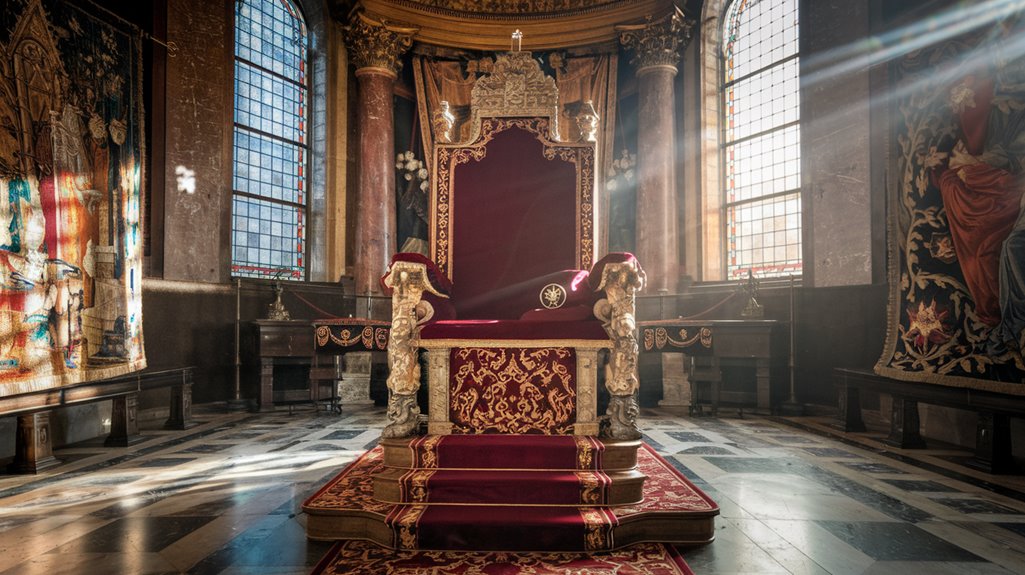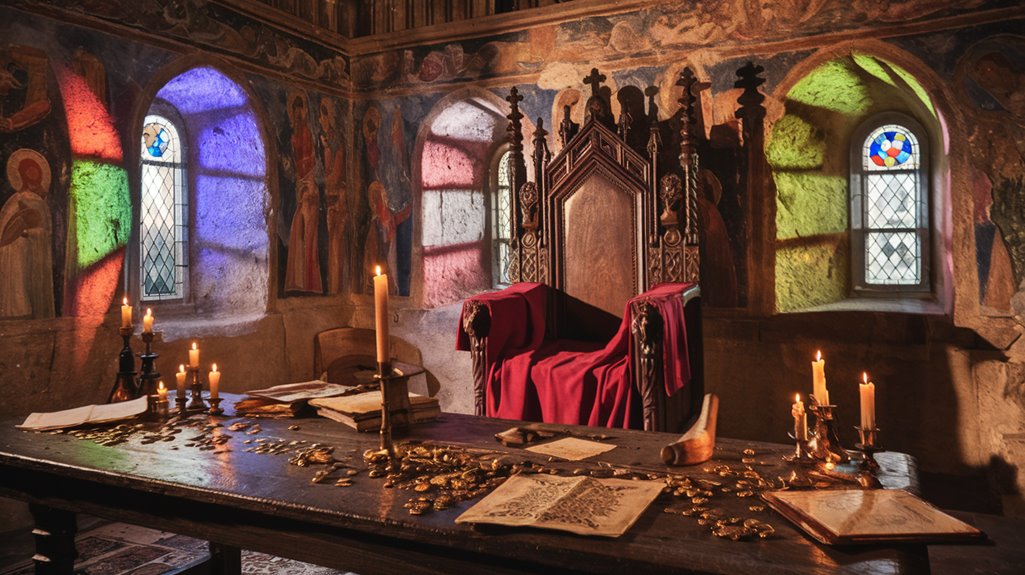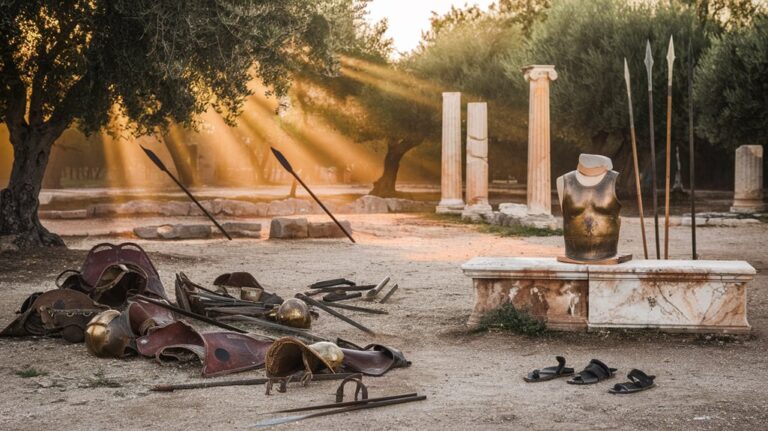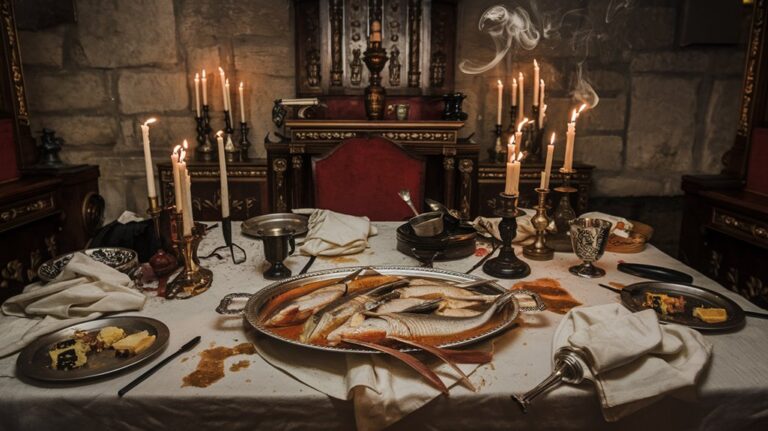Benedict IX Was Pope on Three Separate Occasions
You'll find few stories in papal history as remarkable as Benedict IX's triple reign over the Catholic Church. As you consider the unprecedented nature of his papacy, you might wonder how one man managed to lose and regain the Holy See not once, but twice. His turbulent journey from boy pope to papal merchant to final ouster reveals a fascinating window into one of the Church's most chaotic periods, and what you'll discover about his reign may surprise you.
Early Rise: The Boy Who Became Pope
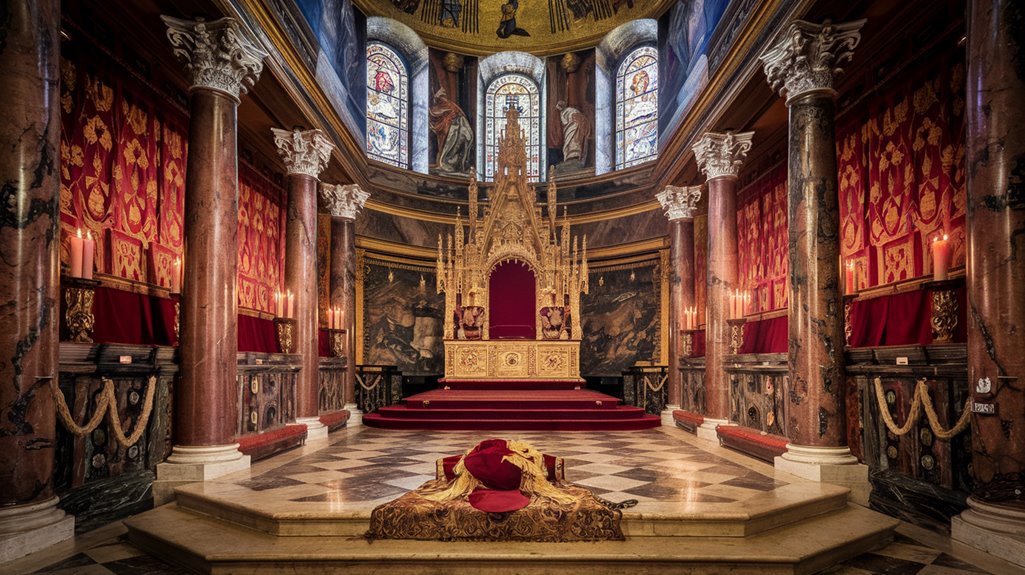
While the exact details of his age remain disputed, Benedict IX ascended to the papacy at a remarkably young age – possibly as young as 11 or 12 years old.
Born as Theophylactus of Tusculum in Rome around 1012, he wasn't driven by youthful ambition but rather pushed into the role by his powerful father, Count Alberic III.
The familial legacy of the Tusculani family had already placed two of Benedict's uncles on the papal throne – Benedict VIII and John XIX.
During this period, Rodulfus Glaber, a contemporary historian, documented Benedict's ascension.
You'll find that his appointment wasn't based on merit or spiritual calling; instead, it was purely the result of nepotism.
As a member of both the Tusculani and Colonna families, he lacked any clerical qualifications and was woefully unprepared for the responsibilities that awaited him.
His dissolute lifestyle and questionable behavior would later become the source of significant criticism from religious leaders of his time.
Power Struggles and First Papal Reign
After securing the papacy through his father's bribes in October 1032, Benedict IX's first reign quickly descended into chaos and controversy. His scandalous reign was marked by allegations of immorality and ongoing political machinations that rocked the Church.
Being elected at about age twenty, Benedict IX became the youngest pope in history when he ascended to the papal throne. The Tusculum family's influence helped maintain his position initially, but their power couldn't shield him from growing opposition.
As Count of Tusculum, his father's status played a crucial role in his appointment to the papacy. His grip on power was tenuous at best. In 1036, the Romans forced him to flee the city, though he managed to return with Emperor Conrad II's support.
His behavior reportedly included hosting orgies at the Lateran Palace and engaging in various crimes. These actions would later be detailed by his successor Victor III, who accused Benedict of rape, murder, sodomy, and violence during this turbulent period.
The Controversial Sale of the Holy See
Benedict IX's most notorious act came in 1045 when he sold the papacy to his godfather, John Gratian, who became Pope Gregory VI.
This unprecedented display of papal corruption stemmed from Benedict's desire to finance his personal life, possibly including marriage plans. The sale violated ecclesiastical ethics and plunged the papal treasury into severe financial crisis.
The clergy's refusal to accept this transaction led them to elect Sylvester III instead, creating a chaotic power struggle. Theophylactus of Rome had already served as pope since 1032, making him one of the youngest pontiffs in history.
When Benedict IX refused to face charges of simony, he was excommunicated. The scandal became so severe that Holy Roman Emperor Henry III had to intervene, convening the Council of Sutri to resolve the crisis.
He deposed both Benedict IX and Gregory VI, appointing Damasus II as the new pope to restore order and stability.
Three Times a Pope: An Unprecedented History
Throughout papal history, no other figure has matched the extraordinary distinction of serving as pope on three separate occasions.
Benedict IX first gained papal authority in 1032, backed by his powerful familial connections to the Tusculani family. After being deposed in 1044, he returned in April 1045, only to sell the position to his godfather, Gregory VI, a month later.
Not content with retirement, Benedict IX seized the papacy once more in 1047 following Clement II's death. His final stint ended when German troops under Henry III forced him out in July 1048. He spent his remaining years as a penitent at Grottaferrata, where he died in 1055 or 1056.
You'll find his turbulent path through the papal office reflects the political chaos of the era, ultimately leading to his excommunication in 1049 for refusing to answer charges of simony.
The Lasting Impact on Catholic Church Reform
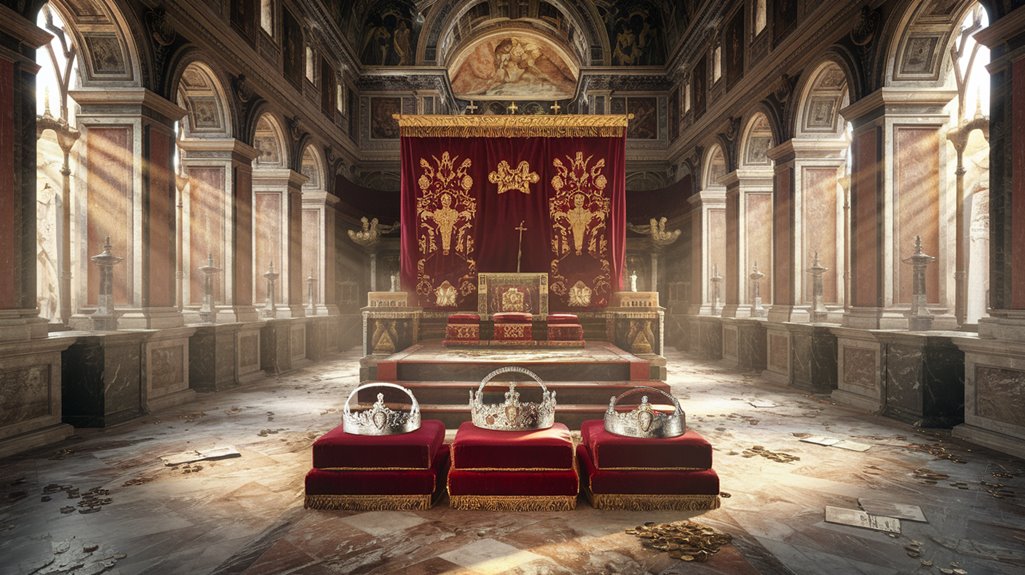
The tumultuous reign of Benedict IX sparked sweeping reforms within the Catholic Church that would shape its future for centuries.
You'll find that the most significant reform measures focused on securing the papal conclave process, implementing age restrictions for cardinals, and dismantling the influence of powerful families like the Counts of Tusculum.
To restore church integrity, leaders established stricter controls over papal elections and introduced new checks and balances. They locked down the conclave to prevent outside interference and worked to eliminate the familial corruption that had plagued Benedict IX's era.
His notorious reputation for selling church offices made it clear that systematic changes were needed to prevent future abuse of power.
At the time, Benedict IX was driven from Rome repeatedly by angry citizens who opposed his immoral lifestyle and corrupt leadership.
While his papacy represented a dark period in church history, it ultimately led to positive changes. The scandals of his reign pushed the church to address its vulnerabilities and create lasting reforms that strengthened its institutional foundation.

